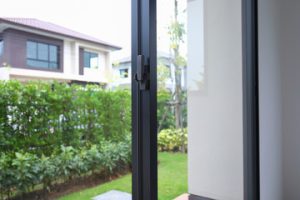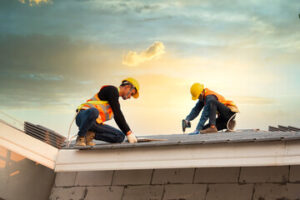Door Replacement Austin offers an opportunity to improve your home’s energy efficiency, security, and aesthetics. It’s important to hire experienced and knowledgeable tradespeople who have experience with door installation and can provide quality results.

Doors that stick, squeak or require force to open and close indicate alignment issues or frame damage. They also allow air to escape, raising your energy costs.
A door replacement project offers a wide range of customization options. This allows you to tailor your doors to fit your home’s aesthetic and meet your energy efficiency and security needs. The type of material, style, finish, and hardware you choose will determine how much the project will cost. Door add-ons like security features and decorative glass can also affect price.
Whether your doors are the entry point to your home or a part of your home’s facade, they play important roles in protecting your family and belongings, preventing intruders from entering, and adding curb appeal. If your doors are beginning to show signs of wear, are difficult to open and close, or have visible damage or stains, it may be time to consider replacing them.
When it comes to door replacement, there are several things you should consider before deciding on a contractor. Look for a company with a strong reputation in the community, positive customer reviews, and an extensive portfolio of previous projects. You should also consider the amount of work needed to complete your door replacement project, as this will impact the total cost and timeline of the project.
During your consultation, the contractor should assess the condition of your existing doors and the installation site. They should take measurements of the opening and the existing frame to ensure a perfect fit. They should also discuss the different types of door replacement and the installation process. If you’re installing a pre-hung door, the installer will remove the slab (door) from its frame and slide it into a portion of your existing wall. This makes the installation faster and less invasive than a full door replacement.
Energy Efficiency
Besides being stylish and providing greater privacy, new doors are designed with energy efficiency in mind. This means they are better insulated, helping to maintain a consistent indoor temperature and reduce drafts and energy costs. Energy-efficient replacement doors also help to reduce your carbon footprint and conserve natural resources.
The material used to construct your doors impacts their energy efficiency. Fiberglass and steel offer superior insulation properties, compared to solid wood doors. Other factors that contribute to a door’s energy efficiency are the window frames, weatherstripping, and glass-to-door ratio. Additionally, a door’s frame and insulation can be improved with the addition of energy-efficient add-ons.
If you notice that your doors are difficult to open and close, or are sticking or sagging, it’s likely time for a replacement. This can be a sign of serious damage or wear that will only worsen with continued use. A professional inspection can assess the damage and determine whether repair is an option or a replacement is required.
A door’s R-Value and U-Factor are the most important indicators of its energy efficiency. The higher the R-Value, the more effective it is at insulating a home and preventing heat loss. The lower the U-Factor, the less heat escapes and the more efficient it is.
Other features that enhance a door’s energy efficiency include low-emissivity coatings, inert gas fills between glass panes, and more. The best doors will have a U-factor of 0.17 and a SHGC of 0.23, or better.
If you want to learn more about how upgrading your doors can increase your energy efficiency, schedule a free home energy score consultation with Plastpro. A home energy score report will highlight the areas of your home that require improvement, including your exterior doors. This will give you a clear idea of the improvements that would make the biggest difference in your energy consumption and costs. In addition, you may qualify for government incentives and rebates if you choose energy-efficient replacement doors. Contact us today to schedule your appointment! We’ll help you create the perfect door to fit your home and aesthetic.
Security
In an era when home security is paramount, it’s important to consider the door as a potential entry point for intruders. A well-chosen replacement door can fortify the home and deter intrusions, and it’s essential to find a solution that balances aesthetic appeal with robust protection.
A seasoned contractor can help homeowners identify and implement the right upgrades to strengthen the security of their homes. This includes ensuring that the frame is strong and secure, as well as enhancing the lock with features that prevent picking and bumping.
During installation, the contractor should carefully remove the old door to avoid damaging the surrounding structure and ensure that the new door is properly aligned in the frame. The installer can also make fine adjustments to ensure that the door opens and closes smoothly, and that it seals tightly to prevent air infiltration.
The type of material the door is made from is another important factor in its security, as some materials are more sturdy and durable than others. In addition, some doors come with special reinforcements that improve their security, such as a reinforced strike plate that protects the area where the latch sits. Other options include hinge guards to reinforce the hinge points, which are often a weak point in break-in attempts, and security bars that add an extra layer of protection.
It’s also a good idea to install a peephole, which allows homeowners to see visitors before opening the door, or a security bar that makes it difficult to force open the door from the outside. Some doors also feature tempered glass, which shatters into small, less dangerous pieces, or impact-resistant glass that can withstand a heavy blow.
The best way to ensure that a new replacement door offers the highest level of security is to have it professionally installed. An experienced professional will ensure that the door fits securely in the frame and that all of its security features are functioning as intended.
Aesthetics
Door replacement is a versatile home improvement project that redefines a home’s aesthetic and contributes to its functionality and energy efficiency. It also provides homeowners with a variety of design and material options to fit their specific preferences.
Whether you want to create a bright, cheerful atmosphere or enhance the visual appeal of your home, selecting the right color for your door is essential. A door that matches the surrounding brick or exterior paint hues can significantly improve a home’s curb appeal. On the other hand, a neutral colored door can blend in with any existing décor and offer a sleek appearance.
A door’s primary function is to provide security, and it can help prevent drafts and energy loss by preventing air leakage. However, older doors often do not have the same security features as newer models, making them more vulnerable to forced entries and break-ins. Replacing your door with a more secure model will not only improve your home’s security, but it will also lower your energy costs.
Many older homes have dingy-looking doors that can make the entire property look unkempt and outdated. Replacing your doors with new, stylish ones will immediately give your house a fresher appearance.
Door replacements are also an ideal opportunity to revamp the entryway’s trim work. Using different materials, designs, and colors for the trim can significantly improve your home’s appearance.
The first sign that you should consider replacing your door is visible damage or wear and tear. For instance, if your door has become difficult to open or close, this is an indication that it’s time for a replacement.
Another reason to consider door replacement is that old doors may not be as insulated as newer models, leading to high heating and cooling costs. A new, insulated door will be better at retaining heat in the winter and keeping your home cool in the summer, reducing energy costs. Moreover, some energy-efficient doors qualify for tax credits, providing additional savings. Lastly, if your door is old and worn out, it will likely be more susceptible to dents and scratches, which can decrease its security features.

